State of the Climate in Asia 2024
<p>The World Meteorological Organization’s State of the Climate in Asia 2024 report warns that the region is warming nearly twice as fast as the global average, driving more extreme weather and posing
<p>The World Meteorological Organization’s State of the Climate in Asia 2024 report warns that the region is warming nearly twice as fast as the global average, driving more extreme weather and posing
The Renewable Energy for Rural Livelihood (RERL) is implemented from 1 April 2011 upon the successful completion of the Rural Energy Development Programme (REDP) with main focus on enhancing rural livelihood.
Nepal is endowed with a precious natural resource in the form of water. The overall development of Nepal hinges on the exploitation of this resource in a rational and sustainable manner.The available amount
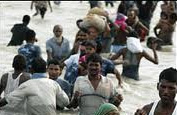
<p><span style="font-size:14px;"><strong>Glacial lake outburst flood</strong></span></p> <p><img alt="" src="http://www.indiaenvironmentportal.org.in/files/country/nepal/floods_hl.jpg" style="border-width: 2px; border-style: solid;" /></p> <p>The acronym GLOF is used for glacier floods caused by the drainage of naturally dammed lakes in the glacier, on or at the margin of glaciers. Glacial lakes form when a glacier retreats, leaving the debris mass at the end of the glacier – the end moraine – exposed.</p>
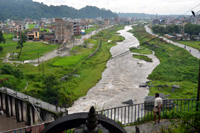
<p><span style="font-size:14px;"><strong>Bagmati River</strong></span></p> <p><img alt="" src="http://www.indiaenvironmentportal.org.in/files/country/nepal/bagmati_hl.jpg" style="border-width: 2px; border-style: solid;" /></p> <p>The Bagmati Action Plan is the latest attempt to heal the river system, from its origins in the Shivapuri hills to Chouva where it leaves the valley. It was launched in 2008 for the period 2009-14, and proposes a budget of close to 15 billion Nepalese rupees spread over five years (in comparison, in 2008 – 2009, the total allocated for the Bagmati and its tributaries was Rs. 1,394.24 million).</p>
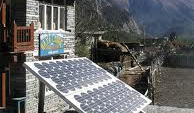
<p><span style="font-size:14px;"><strong>Renewable Energy</strong></span></p> <p><img alt="" src="http://www.indiaenvironmentportal.org.in/files/country/nepal/biogas_hl.jpg" style="border-width: 2px; border-style: solid;" /></p> <p>The major energy resource base in Nepal consists of biomass, hydroelectricity, petroleum products, natural gas, and coal reserves. Among the entire energy resource base, it is evident that biomass is the dominant resource base of the country with respect to its utilization. Biomass provided 86% of the total energy consumption, petroleum 9%, which is mainly consumed by urban areas, electricity only 2% and renewable 1% of the total energy consumption.</p>
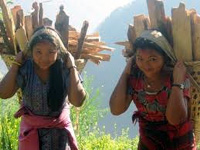
<p><span style="font-size:14px;"><strong>Community Forestry - Nepal</strong></span></p> <p><img alt="" src="http://www.indiaenvironmentportal.org.in/files/country/nepal/forestry_hl.jpg" style="border-width: 2px; border-style: solid;" /></p> <p>The most significant regulatory development in support of community forestry was the enactment of the Forest Act in 1993 by the first elected parliament after the 1990 movement for democracy. The 1993 Forest Act guaranteed the rights of local people in forest management. Nepal became the world’s first country to enact such radical forest legislation, allowing local communities to take full control of government forest patches under a community forestry program.</p>
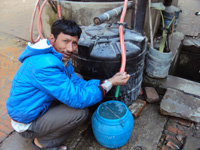
<p><span style="font-size:14px;"><strong>Privatization of Water</strong></span></p> <p><img alt="" src="http://www.indiaenvironmentportal.org.in/files/country/nepal/private_water_hl.jpg" style="border-width: 2px; border-style: solid;" /></p> <p>The World Bank initiated water sector reforms aim primarily at privatizing water utilities and commercializing water resources. The water privatization policy of the World Bank articulated in a 1992 paper entitled “Improving Water Resources Management” proceeds from the belief that water availability at low or no cost is uneconomical and inefficient.</p>

Agriculture is the major sector of Nepalese economy. The Ministry is the central apex body of Government of Nepal to look after the agriculture and allied fields. The Ministry of Agriculture and Cooperatives

<p><span style="font-size:14px;"><strong>Food Safety in Nepal</strong></span></p> <p><img alt="food safety" src="http://www.indiaenvironmentportal.org.in/files/country/nepal/foodsafety_hl.jpg" style="border-width: 2px; border-style: solid; width: 530px; height: 300px;" /></p> <p><span style="font-size:12px;"><span style="font-family: arial,helvetica,sans-serif;">Since 2006 Food Safety has become a concern that is increasingly referred to in the media. Government has undertaken to promote and strengthen food safety aspects through putting regulatory norms and guidelines into effective enforcement. </span></span></p>
This conference has been organized out of widespread the environmental degradation, global warming, biodiversity threats and the increasing conflicts of violence around the world.